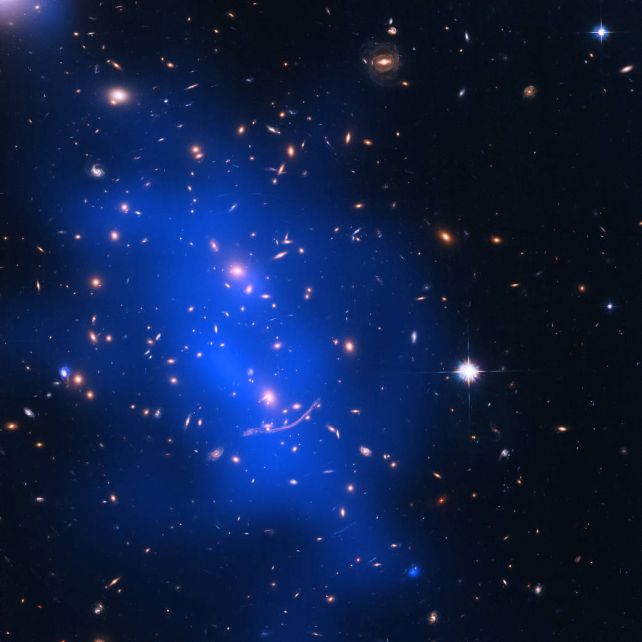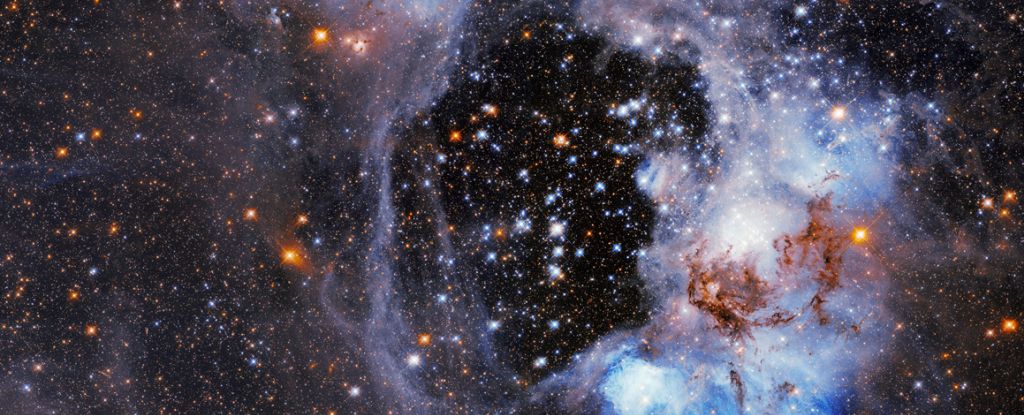Unlocking the Universe’s Secrets: Dark Energy and Dark Matter
Understanding the Cosmic Balance
In a fascinating revelation, scientists have confirmed that dark energy constitutes approximately 69 percent of the universe’s total mass-energy content. This cosmic revelation leaves the remaining 31 percent to be shared by two intriguing entities: normal matter, including everything we can see, and the enigmatic dark matter—a gravitational enigma that defies easy explanation.
Unveiling the Matter Makeup
Astronomer Mohamed Abdullah, affiliated with the National Research Institute of Astronomy and Geophysics in Egypt and Chiba University in Japan, explains that only about 20 percent of this total matter is composed of regular, or ‘baryonic,’ matter. This category includes stars, galaxies, atoms, and all life forms. The remaining 80 percent is attributed to dark matter, a mysterious substance made up of yet-to-be-discovered subatomic particles.
The Enigma of Dark Energy
Dark energy, in contrast, is more of a force than a substance. Its nature remains a puzzle. It is the label we use for whatever is driving the universe’s accelerating expansion. This enigmatic force makes up the majority of the universe’s matter-energy density, consistently hovering around 70 percent. While measuring the expansion rate of the universe has proven challenging, scientists are determined to do so. Pinpointing the universe’s matter-energy density could provide insights into dark energy’s nature, its historical impact on the universe’s expansion, and the potential future scenarios: will the universe continue expanding indefinitely, or will it contract into a Big Crunch?
Cracking the Cosmic Code with Galaxy Clusters
One established method for gauging the presence of dark energy revolves around galaxy clusters. These clusters are composed of matter that has gravitationally coalesced over the universe’s 13.8-billion-year existence. By comparing the number of galaxies within a cluster and their combined mass with numerical simulations, scientists can calculate the proportions of matter and energy.
Challenges in Measuring Galaxy Cluster Mass
However, there’s a catch. Measuring the mass of a galaxy cluster directly is a daunting task since dark matter contributes significantly to its mass. Instead, researchers utilized a technique called GalWeight to determine the mass of galaxy clusters in their dataset. This method involved counting the number of galaxies within each cluster. As more massive clusters naturally contain more galaxies (a relationship known as the mass-richness relation or MMR), researchers could estimate the total mass of each cluster in their sample.
Simulations Shed Light
The next step involved running numerical simulations that generated galaxy clusters with varying proportions of dark energy and matter. The simulations that closely resembled the observed galaxy clusters belonged to a universe where matter accounted for 31 percent of the total.
Promising Results and Cosmic Agreement
This recent finding is a significant improvement over the previous effort, which suggested a dark energy proportion of 68.5 percent and matter at 31.5 percent. It also aligns remarkably well with other measurements of the universe’s matter-energy density, suggesting that we are on the brink of a breakthrough.
The Road Ahead
As astronomer Tomoaki Ishiyama of Chiba University points out, this work highlights the potential of cluster abundance as a powerful technique for constraining cosmological parameters. It complements other methods, such as cosmic microwave background analysis, baryon acoustic oscillations, Type Ia supernovae observations, and gravitational lensing, bringing us closer to unraveling the universe’s deepest mysteries.
The research has been published in The Astrophysical Journal.
Also Read: Scientists Warn Of Mass Extinction Threat To Branches On The Tree Of Life







